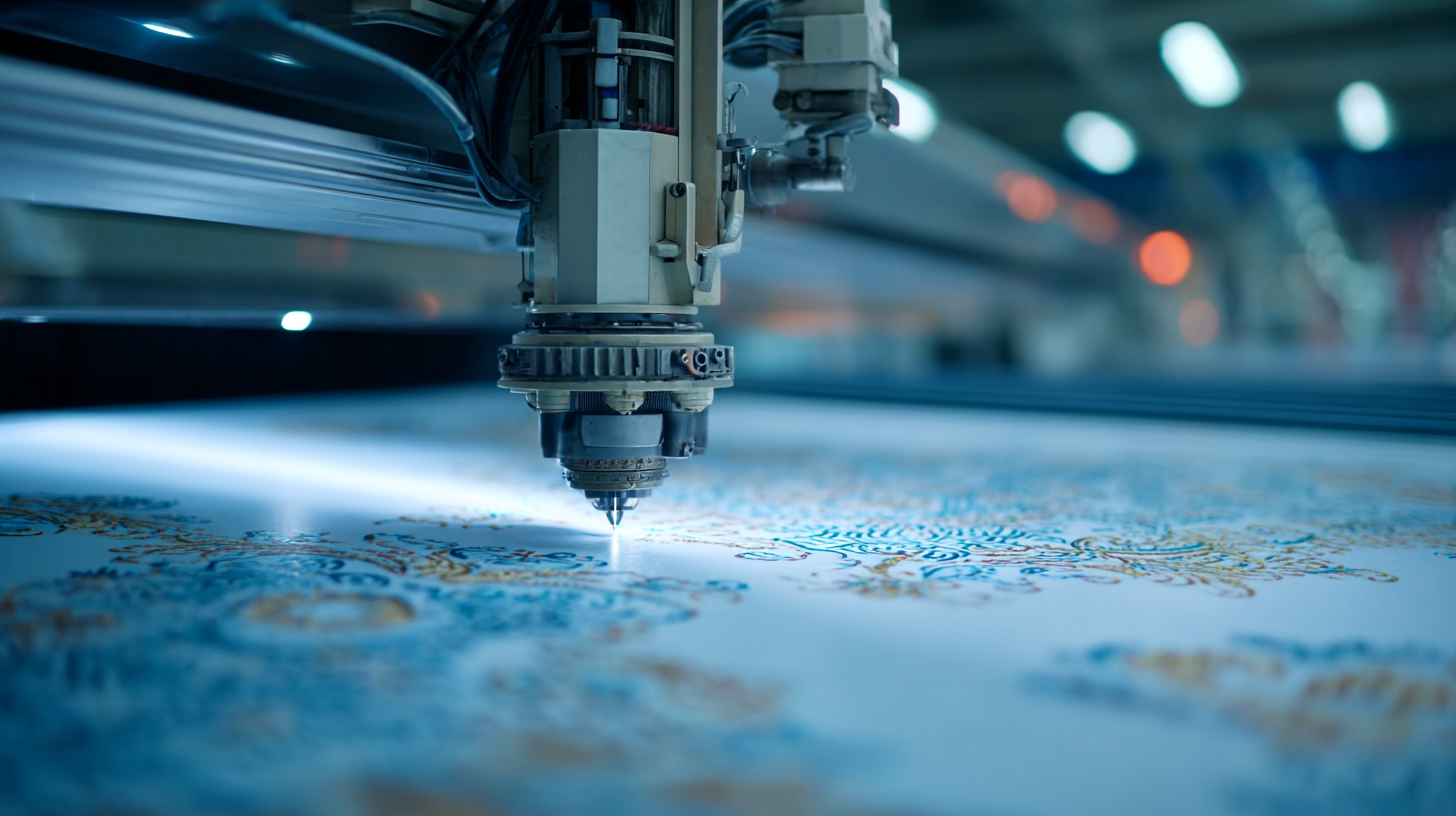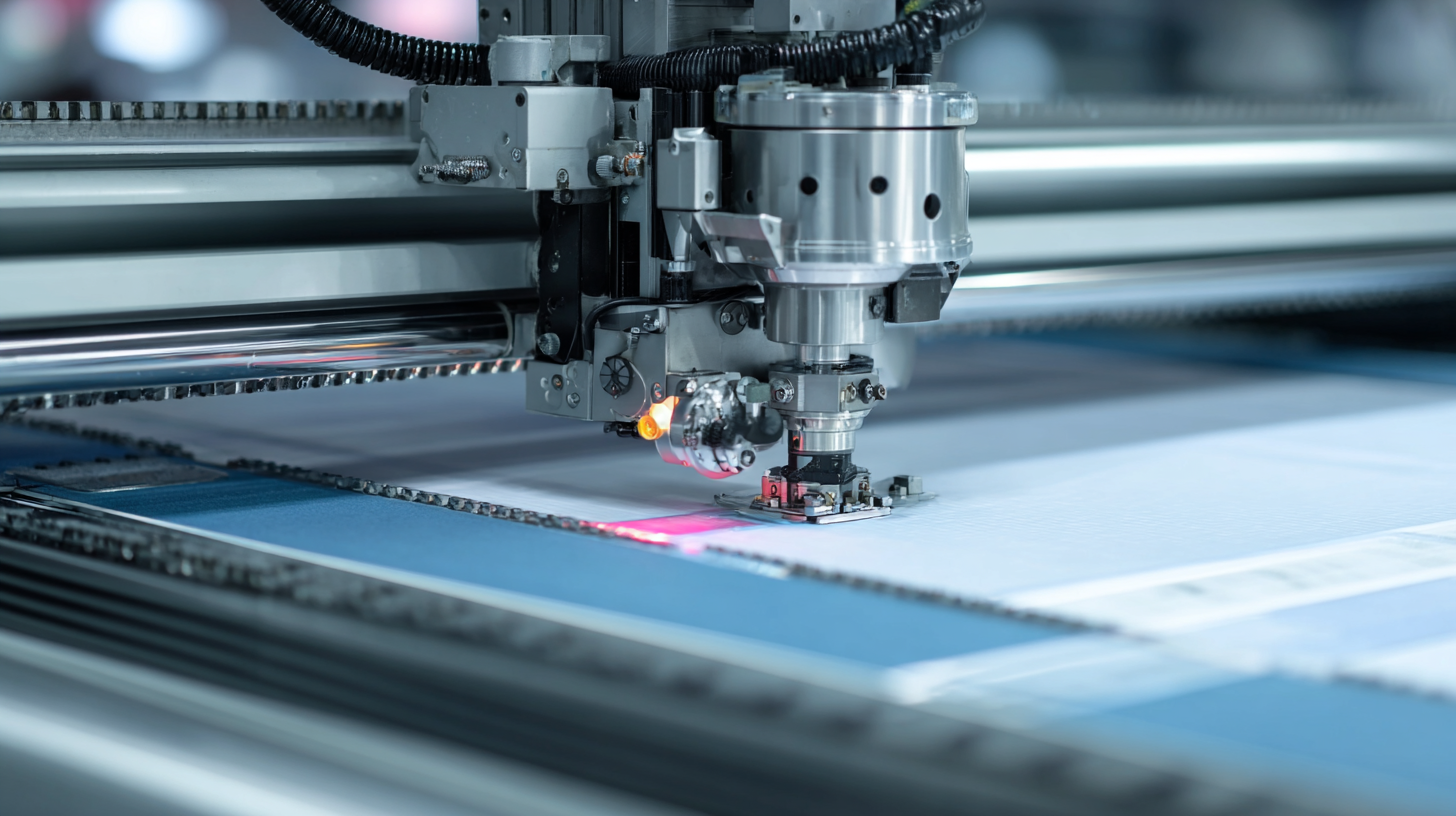10 Best Cnc Fabric Cutting Machines for Precision and Efficiency
In the rapidly evolving textile industry, the demand for precision and efficiency has led to a significant rise in the adoption of advanced technologies, notably the Cnc Fabric Cutting Machine. According to recent market research, the global textile cutting machines market is projected to grow at a CAGR of 5.6% from 2021 to 2026, underscoring the increasing reliance on automated solutions for fabric cutting. These machines not only enhance productivity but also reduce material waste, contributing to sustainable manufacturing practices.

The versatility and accuracy of Cnc Fabric Cutting Machines have made them indispensable tools for manufacturers, designers, and hobbyists alike, enabling the execution of complex patterns with remarkable precision. As we explore the top alternatives available on the market today, it’s essential to consider how these cutting-edge machines can optimize your fabric cutting processes and meet the evolving demands of the industry.
Top Features to Consider When Choosing a CNC Fabric Cutting Machine
Choosing the right CNC fabric cutting machine is crucial for maximizing both precision and efficiency in your operations. One of the most important features to consider is the cutting technology employed by the machine. Options such as laser cutting, knife cutting, and waterjet cutting each offer unique advantages depending on the type of fabric and the complexity of the designs. Laser cutting, for instance, provides incredibly precise cuts with minimal material wastage, making it ideal for intricate patterns, while knife cutting may be better suited for heavier fabrics.
Another vital aspect to evaluate is the machine's software compatibility and user interface. A user-friendly software platform can significantly enhance workflow efficiency, allowing operators to quickly input designs and monitor the cutting process in real-time. Look for machines equipped with advanced CAD/CAM software that can seamlessly integrate with your existing systems. Additionally, consider the machine's speed and cutting area, as these factors will directly impact your production capabilities. Operating faster while maintaining accuracy ensures that you meet tight deadlines without compromising on quality.
10 Best CNC Fabric Cutting Machines for Precision and Efficiency
| Model | Cutting Area (mm) | Accuracy (mm) | Max Speed (m/min) | Material Compatibility | Price Range (USD) |
|---|---|---|---|---|---|
| Model A | 3000 x 2000 | 0.05 | 80 | Fabric, Leather | $15,000 - $20,000 |
| Model B | 2500 x 1500 | 0.08 | 70 | Textiles, Felt | $10,000 - $15,000 |
| Model C | 3200 x 2500 | 0.06 | 90 | Fabric, Foam | $18,000 - $22,000 |
| Model D | 1500 x 1500 | 0.1 | 60 | Textiles | $8,000 - $12,000 |
| Model E | 4000 x 3000 | 0.04 | 100 | Leather, Fabric | $20,000 - $25,000 |
| Model F | 2800 x 2000 | 0.07 | 75 | Foam, Fabric | $12,000 - $16,000 |
| Model G | 3600 x 2600 | 0.05 | 85 | Textiles | $16,000 - $20,000 |
| Model H | 2200 x 1800 | 0.09 | 65 | Leather, Felt | $9,000 - $13,000 |
| Model I | 3100 x 2400 | 0.06 | 92 | Fabric, Foam | $17,000 - $21,000 |
| Model J | 3400 x 2000 | 0.04 | 88 | Textiles, Leather | $19,000 - $24,000 |
Comparative Analysis of the Leading CNC Fabric Cutting Machines
The textile industry is undergoing significant transformations, largely influenced by advancements in CNC fabric cutting machines. These state-of-the-art devices enhance precision and efficiency in fabric processing, making them essential in modern manufacturing. As automation and artificial intelligence become integral to production workflows, manufacturers are seeking solutions that not only streamline operations but also deliver high-quality results. The comparative analysis of the best CNC fabric cutting machines highlights how factors such as speed, adaptability, and user-friendliness play crucial roles in optimizing the cutting process and improving overall productivity.
Market trends indicate a growing demand for innovative fabric cutting technologies, driven by ongoing enhancements in both machinery and integration software. The rise of plotter cutting machines is particularly noteworthy, as these devices are reshaping precision cutting capabilities in the textile and signage industries. Additionally, the market for cutting fluids is expanding, revealing their critical role in improving machining efficiency and extending the life of cutting tools. As the garment industry embraces these developments, companies that leverage advanced cutting solutions stand to gain a competitive edge, positioning themselves as industry leaders in a rapidly evolving landscape.
Maintenance Tips for Ensuring Longevity of CNC Fabric Cutters
 Maintaining CNC fabric cutting machines is essential for ensuring their longevity and optimal performance. According to a report by Technavio, proper maintenance can extend the lifespan of these machines by up to 30%, significantly reducing operational costs for businesses in the textile and manufacturing industries. Regular maintenance practices include cleaning the cutting bed, checking and calibrating the cutting tools, and ensuring that the software is up to date. This not only improves cutting precision but also minimizes downtime, which can be a significant factor in the production schedule.
Maintaining CNC fabric cutting machines is essential for ensuring their longevity and optimal performance. According to a report by Technavio, proper maintenance can extend the lifespan of these machines by up to 30%, significantly reducing operational costs for businesses in the textile and manufacturing industries. Regular maintenance practices include cleaning the cutting bed, checking and calibrating the cutting tools, and ensuring that the software is up to date. This not only improves cutting precision but also minimizes downtime, which can be a significant factor in the production schedule.
Additionally, lubrication of moving parts is critical. A study conducted by the Fabricators & Manufacturers Association (FMA) suggests that machines with proper lubrication can operate up to 15% more efficiently than those that are not maintained. It is recommended to develop a routine maintenance schedule that includes daily, weekly, and monthly checks to address wear and tear before they lead to costly repairs. By investing time in these maintenance tips, companies can enhance the performance and reliability of their CNC fabric cutting machines, ensuring consistent output quality and efficiency in their operations.
Cost-Effectiveness: Evaluating Value in CNC Fabric Cutting Machines
When investing in CNC fabric cutting machines, evaluating cost-effectiveness is crucial for achieving optimal value. The initial purchase price is only one aspect; it's essential to consider operational costs, maintenance expenses, and the return on investment (ROI). A machine that boasts lower upfront costs may lead to higher expenses down the line, especially if it requires frequent repairs or lacks efficiency. Therefore, a comprehensive analysis of both short-term and long-term costs can guide you toward a more informed decision.
Tips: Look for machines that offer warranties and customer support. This can save you money on repairs and downtime in the future. Additionally, consider the machine's versatility—if it can accommodate different materials and cutting techniques, it enhances its longevity and effectiveness, providing better value overall.
Another important aspect to assess is the machine's efficiency in terms of speed and accuracy. Faster machines with high precision reduce waste and production time, directly impacting your bottom line. It's beneficial to read reviews and seek testimonials from other users to gauge how well a particular model performs in real-world applications.
Tips: Don’t forget to factor in the software capabilities of the CNC machine. Advanced software can lead to smarter cutting paths and material management, which ultimately translates to cost savings. Investing in training for your team can also maximize the machine’s performance and efficiency.
Cost-Effectiveness of Top CNC Fabric Cutting Machines
User Reviews and Testimonials: Insights from the Fabric Cutting Community
In the realm of fabric cutting, user experiences play a crucial role in guiding potential buyers towards making informed decisions. The fabric cutting community is vibrant and active, with numerous reviews and testimonials showcasing the effectiveness of various CNC fabric cutting machines. These narratives offer insight into how different machines perform in real-world scenarios, emphasizing aspects such as precision, speed, and user-friendliness. For example, many users appreciate machines that have robust software support, making it easier to integrate them into existing workflows.

Furthermore, testimonials often highlight the efficiency gains achieved through the adoption of modern CNC machines. Many users report not only enhanced cutting accuracy but also significant time savings, which translate into higher productivity levels. This feedback showcases a trend where businesses are increasingly reliant on technology to elevate their operational capabilities. As innovators in this space continue to push boundaries, it’s clear that the insights shared by users not only shape consumer choices but also influence the future developments in CNC fabric cutting technology.
